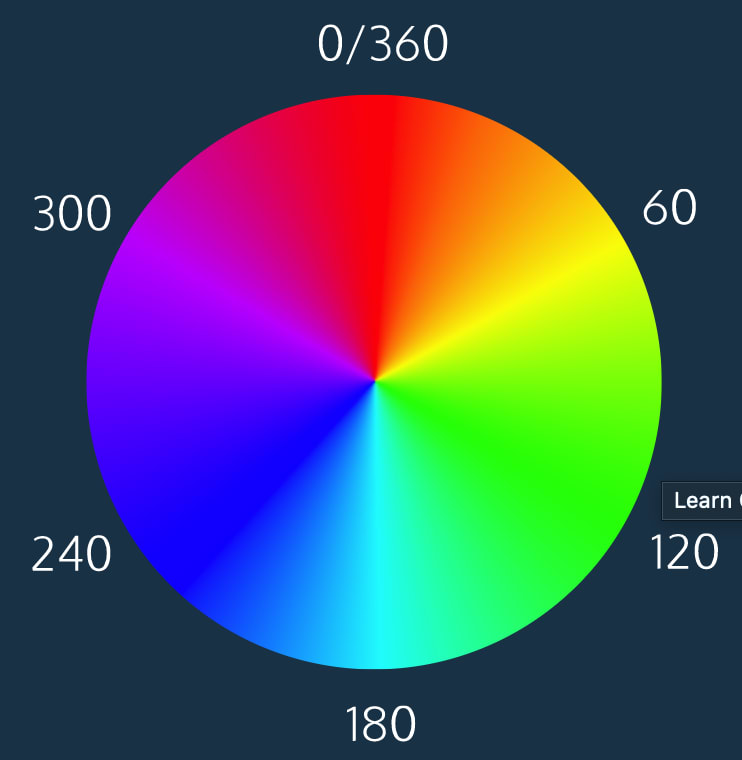What i've learnt from the colours lesson of Codecademy's CSS course.
-
Colors in CSS can be described in three different ways:
- Named colors — English words that describe colors, also called keyword colors
- RGB — numeric values that describe a mix of red, green, and blue
- HSL — numeric values that describe a mix of hue, saturation, and lightness
-
When you style an elements colour you can either style the foreground colour or the background colour. You would use these properties for this:
- color - this property styles an element’s foreground color.
- background-color - this property styles an element’s background color.
There are many different colours to choose from...here are just some!
Hex
- Hexadecimal colours can be used. These are 3 or 6 digit numbers that begin with a hash character. The numbers and letters represent values for red, blue and green.
.green {
background-color: #8FBC8F;
}
RGB
- As an alternative to hex colour codes, RGB codes can be used. There isn't a right or wrong choice, its a matter of personal preference. However its best to stick to one format throughout your CSS.
- The first number represents the amount of red, the second is green, and the third is blue.
h1 {
color: rgb(23, 45, 23);
}
HSL
- Another colour scheme is HSL or hue-saturation-lightness.
- HSL is laid out similarly to RGB except the numbers mean different things.
- The first number represents the degree of the hue, and can be between 0 and 360. The second and third numbers are percentages representing saturation (intensity of the colour) and lightness respectively (50% is about normal lightness). Here is an example:
.box {
color: hsl(120, 60%, 70%);
}
- The first number is the hue and it refers to an angle on the colour wheel below.

- HSL is useful because you can change things like the lightness by changing one number, rather than affecting each number in the code.
Opacity and Alpha
- You can change the opacity of elements so they show the elements beneath them.
- You can adapt your RGB and HSL properties to include an opacity value that is called an alpha.
- To change the HSL you add an a onto the property and a fourth value.
color: hsla(34, 100%, 50%, 0.1);
- To change the RGB you also add an a onto the property and a fourth value.
color: rgba(234, 45, 98, 0.33);
- The alpha values can be between 0 and 1. Zero is completely transparent and one is opaque. Half transparent is 0.5.
You can think of the alpha value as, “the amount of the background to mix with the foreground”. When a color’s alpha is below one, any color behind it will be blended in. The blending happens for each pixel; no blurring occurs.
Alpha can only be used with HSL and RGB, not hex or named colours.
There is a value for completely transparent which is equivalent to rgba(0, 0, 0, 0) which is:
color: transparent;







Top comments (0)